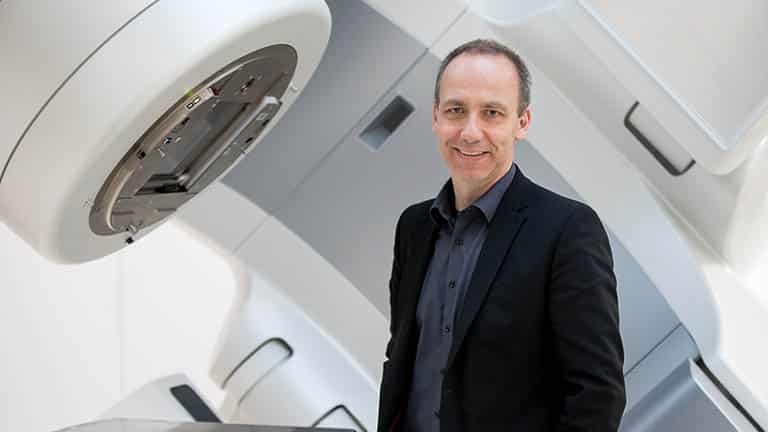
Breast cancer patients will soon receive more precise and potentially life-saving radiation therapy thanks to a unique program being developed in conjunction with HMRI researchers.

Breast cancer patients will soon receive more precise and potentially life-saving radiation therapy thanks to a unique program being developed at Calvary Mater Newcastle.
Associate Professor Joerg Lehmann, Principal Medical Physics Specialist at Calvary Mater Newcastle and Conjoint Associate Professor at the University of Newcastle, received a $405,000 prestigious National Health and Medical Research Council (NHMRC) funding grant from the Federal Government to improve radiation therapy treatment for breast cancer patients.
A prototype has been developed for a Deep Inspiration Breath Hold Therapy (DIBH) program for breast cancer patients to ensure the correct positioning of the patient undergoing treatment and the accuracy of the radiation beam used to treat their cancer. This will help limit exposure of the patient’s heart to potentially harmful radiation.
Several studies have shown that radiation exposure to the heart can increase the risk of heart disease for the patient proportional to the amount of radiation received.
Associate Professor Lehmann says, “By taking a deep breath in, the patient’s lungs fill with air and their heart moves away from the chest while the radiation beam is targeting their cancerous area. Radiation will therefore be moved away from the heart, the position of which varies from person to person.”
The new program will allow the treatment to be guided by ‘live’ images of the patient’s internal anatomy rather than external markers placed on the patient’s chest. These images will be created using the treatment beam, meaning there will be no additional radiation to the patient from the imaging procedure, thereby minimising unnecessary side effects.
Associate Professor Lehmann devised the idea after seeing a similar approach used for prostate cancer patients. He comments, “The system can be easily adapted to current treatment machines in the Department of Radiation Oncology and will help limit exposure of the patient’s heart to potentially harmful radiation.”
As well as breast cancer, DIBH can also be used to treat lymphomas in the chest region and other chest or upper abdomen tumours and involves the patient holding their breath for 20 seconds during treatment.
Current methods for helping administer DIBH often involve additional devices which sometimes result in discomfort for patients, including measures such as clamping their noses while controlling their breathing.
The program is now entering its first phase of three. The system will be developed and researched further over the next three years, together with collaborators locally as well as in Sydney and Melbourne.
Associate Professor Lehmann is an affiliate of HMRI and the Hunter Cancer Research Alliance.
HMRI would like to acknowledge the Traditional Custodians of the land on which we work and live, the Awabakal and Worimi peoples, and pay our respects to Elders past and present. We recognise and respect their cultural heritage and beliefs and their continued connection to their land.

Hunter Medical Research Institute
We’re taking healthy further.
Locked Bag 1000
New Lambton
NSW, Australia, 2305



This site is protected by reCAPTCHA and the Google Privacy Policy and Terms of Service apply.
Copyright © 2024 Hunter Medical Research Institute | ABN: 27 081 436 919
Site by Marlin Communications
